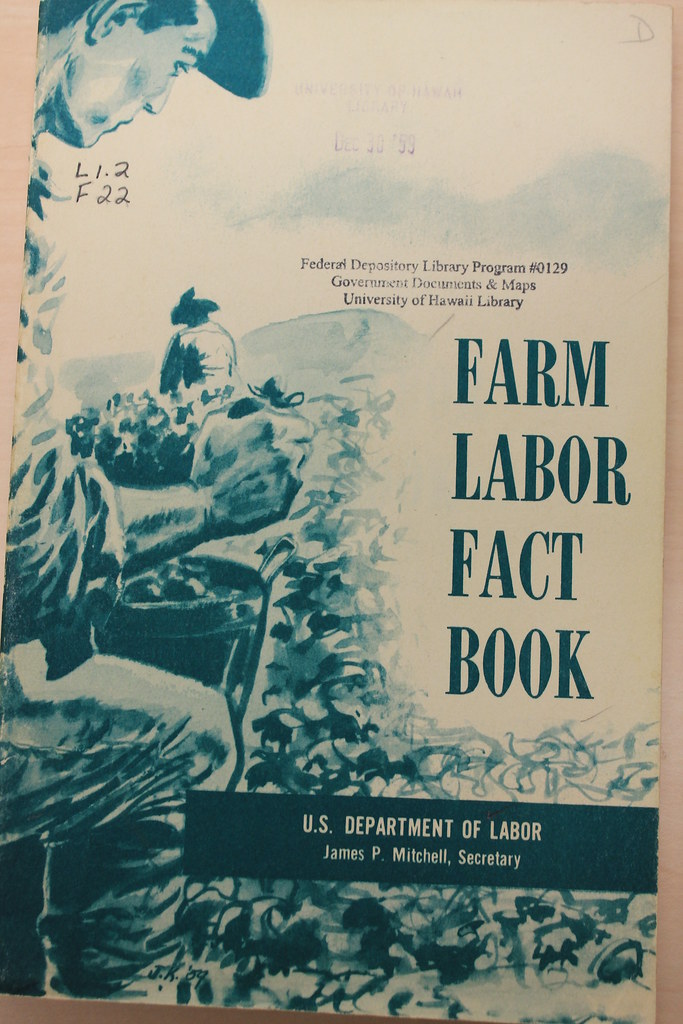2.2: Opinion vs. Fact
- Page ID
- 257546
\( \newcommand{\vecs}[1]{\overset { \scriptstyle \rightharpoonup} {\mathbf{#1}} } \)
\( \newcommand{\vecd}[1]{\overset{-\!-\!\rightharpoonup}{\vphantom{a}\smash {#1}}} \)
\( \newcommand{\id}{\mathrm{id}}\) \( \newcommand{\Span}{\mathrm{span}}\)
( \newcommand{\kernel}{\mathrm{null}\,}\) \( \newcommand{\range}{\mathrm{range}\,}\)
\( \newcommand{\RealPart}{\mathrm{Re}}\) \( \newcommand{\ImaginaryPart}{\mathrm{Im}}\)
\( \newcommand{\Argument}{\mathrm{Arg}}\) \( \newcommand{\norm}[1]{\| #1 \|}\)
\( \newcommand{\inner}[2]{\langle #1, #2 \rangle}\)
\( \newcommand{\Span}{\mathrm{span}}\)
\( \newcommand{\id}{\mathrm{id}}\)
\( \newcommand{\Span}{\mathrm{span}}\)
\( \newcommand{\kernel}{\mathrm{null}\,}\)
\( \newcommand{\range}{\mathrm{range}\,}\)
\( \newcommand{\RealPart}{\mathrm{Re}}\)
\( \newcommand{\ImaginaryPart}{\mathrm{Im}}\)
\( \newcommand{\Argument}{\mathrm{Arg}}\)
\( \newcommand{\norm}[1]{\| #1 \|}\)
\( \newcommand{\inner}[2]{\langle #1, #2 \rangle}\)
\( \newcommand{\Span}{\mathrm{span}}\) \( \newcommand{\AA}{\unicode[.8,0]{x212B}}\)
\( \newcommand{\vectorA}[1]{\vec{#1}} % arrow\)
\( \newcommand{\vectorAt}[1]{\vec{\text{#1}}} % arrow\)
\( \newcommand{\vectorB}[1]{\overset { \scriptstyle \rightharpoonup} {\mathbf{#1}} } \)
\( \newcommand{\vectorC}[1]{\textbf{#1}} \)
\( \newcommand{\vectorD}[1]{\overrightarrow{#1}} \)
\( \newcommand{\vectorDt}[1]{\overrightarrow{\text{#1}}} \)
\( \newcommand{\vectE}[1]{\overset{-\!-\!\rightharpoonup}{\vphantom{a}\smash{\mathbf {#1}}}} \)
\( \newcommand{\vecs}[1]{\overset { \scriptstyle \rightharpoonup} {\mathbf{#1}} } \)
\( \newcommand{\vecd}[1]{\overset{-\!-\!\rightharpoonup}{\vphantom{a}\smash {#1}}} \)
\(\newcommand{\avec}{\mathbf a}\) \(\newcommand{\bvec}{\mathbf b}\) \(\newcommand{\cvec}{\mathbf c}\) \(\newcommand{\dvec}{\mathbf d}\) \(\newcommand{\dtil}{\widetilde{\mathbf d}}\) \(\newcommand{\evec}{\mathbf e}\) \(\newcommand{\fvec}{\mathbf f}\) \(\newcommand{\nvec}{\mathbf n}\) \(\newcommand{\pvec}{\mathbf p}\) \(\newcommand{\qvec}{\mathbf q}\) \(\newcommand{\svec}{\mathbf s}\) \(\newcommand{\tvec}{\mathbf t}\) \(\newcommand{\uvec}{\mathbf u}\) \(\newcommand{\vvec}{\mathbf v}\) \(\newcommand{\wvec}{\mathbf w}\) \(\newcommand{\xvec}{\mathbf x}\) \(\newcommand{\yvec}{\mathbf y}\) \(\newcommand{\zvec}{\mathbf z}\) \(\newcommand{\rvec}{\mathbf r}\) \(\newcommand{\mvec}{\mathbf m}\) \(\newcommand{\zerovec}{\mathbf 0}\) \(\newcommand{\onevec}{\mathbf 1}\) \(\newcommand{\real}{\mathbb R}\) \(\newcommand{\twovec}[2]{\left[\begin{array}{r}#1 \\ #2 \end{array}\right]}\) \(\newcommand{\ctwovec}[2]{\left[\begin{array}{c}#1 \\ #2 \end{array}\right]}\) \(\newcommand{\threevec}[3]{\left[\begin{array}{r}#1 \\ #2 \\ #3 \end{array}\right]}\) \(\newcommand{\cthreevec}[3]{\left[\begin{array}{c}#1 \\ #2 \\ #3 \end{array}\right]}\) \(\newcommand{\fourvec}[4]{\left[\begin{array}{r}#1 \\ #2 \\ #3 \\ #4 \end{array}\right]}\) \(\newcommand{\cfourvec}[4]{\left[\begin{array}{c}#1 \\ #2 \\ #3 \\ #4 \end{array}\right]}\) \(\newcommand{\fivevec}[5]{\left[\begin{array}{r}#1 \\ #2 \\ #3 \\ #4 \\ #5 \\ \end{array}\right]}\) \(\newcommand{\cfivevec}[5]{\left[\begin{array}{c}#1 \\ #2 \\ #3 \\ #4 \\ #5 \\ \end{array}\right]}\) \(\newcommand{\mattwo}[4]{\left[\begin{array}{rr}#1 \amp #2 \\ #3 \amp #4 \\ \end{array}\right]}\) \(\newcommand{\laspan}[1]{\text{Span}\{#1\}}\) \(\newcommand{\bcal}{\cal B}\) \(\newcommand{\ccal}{\cal C}\) \(\newcommand{\scal}{\cal S}\) \(\newcommand{\wcal}{\cal W}\) \(\newcommand{\ecal}{\cal E}\) \(\newcommand{\coords}[2]{\left\{#1\right\}_{#2}}\) \(\newcommand{\gray}[1]{\color{gray}{#1}}\) \(\newcommand{\lgray}[1]{\color{lightgray}{#1}}\) \(\newcommand{\rank}{\operatorname{rank}}\) \(\newcommand{\row}{\text{Row}}\) \(\newcommand{\col}{\text{Col}}\) \(\renewcommand{\row}{\text{Row}}\) \(\newcommand{\nul}{\text{Nul}}\) \(\newcommand{\var}{\text{Var}}\) \(\newcommand{\corr}{\text{corr}}\) \(\newcommand{\len}[1]{\left|#1\right|}\) \(\newcommand{\bbar}{\overline{\bvec}}\) \(\newcommand{\bhat}{\widehat{\bvec}}\) \(\newcommand{\bperp}{\bvec^\perp}\) \(\newcommand{\xhat}{\widehat{\xvec}}\) \(\newcommand{\vhat}{\widehat{\vvec}}\) \(\newcommand{\uhat}{\widehat{\uvec}}\) \(\newcommand{\what}{\widehat{\wvec}}\) \(\newcommand{\Sighat}{\widehat{\Sigma}}\) \(\newcommand{\lt}{<}\) \(\newcommand{\gt}{>}\) \(\newcommand{\amp}{&}\) \(\definecolor{fillinmathshade}{gray}{0.9}\)Opinions vs. Fact
Section Learning Objectives
- Distinguish between opinions and facts, and analyze how each influences the formation of arguments, recognizing the importance of evidence-based reasoning in critical thinking.
- Evaluate the credibility of sources and evidence to differentiate factual arguments from opinions, enhancing skills in critical analysis and information literacy.
- Apply critical thinking strategies to assess the validity and reliability of information, fostering the ability to construct and defend fact-based arguments in diverse contexts.
Introduction
In the landscape of discourse and debate, distinguishing between fact and opinion is a cornerstone of critical thinking and writing. Through a critical thinking and writing lens, we differentiate factual statements grounded in objective evidence from opinions, which are shaped by personal beliefs, values, and interpretations.
Our exploration begins with a clear definition of terms. We then examine the significance of discerning facts from opinions in various contexts, from academic research to media consumption and everyday conversations. This distinction is not just academic; it is a practical skill that enhances students' ability to engage critically with the world around them.
We further investigate the challenges inherent to making these distinctions in an era dominated by information overload, wherein facts and opinions frequently intermingle. We address the impact of bias, both in the presentation of information and in our own processing of it, along with the ways in which this bias can blur the lines between fact and opinion.
Ultimately, this chapter aims to equip students with the intellectual tools needed to critically assess and construct arguments, laying a foundation for clear and ethical communication. The chapter offers an appreciation for the power of language and thought, which will aid students in contributing to discussions with confidence and insight.
Opinions vs. Facts: A Critical Thinking Approach
Understanding the distinction between facts and opinions is crucial for effective critical thinking, reading, and writing. Facts are statements that can be proven true or false based on evidence, while opinions are beliefs or judgments that are not necessarily backed by evidence. For example, a student at a community college in California might encounter a factual statement such as "California is the largest producer of almonds in the United States," which can be verified with agricultural data. In contrast, an opinion might be "California's almonds are the best in the world," which is subjective and based on personal taste. Recognizing the difference between these types of statements helps students critically evaluate the reliability and purpose of the information they encounter, ensuring they base their research and arguments on solid evidence rather than personal beliefs or biased perspectives.

"Diamond of California Brand Nuts, Walnuts, Almonds, Pecans, Filberts floor display" by JeepersMedia is licensed under CC BY 2.0.
This section explores the differences between factual and subjective information, how authors’ intentions influence their content, and the relevance of primary, secondary, and tertiary sources.
Why Intent Matters
Authors write with various intentions, such as to inform, educate, persuade, sell, or entertain. Recognizing an author’s intent helps determine the reliability and usefulness of the information for your research.
Combination of Purposes:
- Informing and educating while also persuading is common in scholarly writing.
- Marketers often blend informing with entertaining to sell products.
"Know the Facts: A WPA poster, imploring the public to develop critical thinking skills. Circa late 1930-early 1940s." by polkbritton is marked with Public Domain Mark 1.0.
Fact vs. Opinion & Objective vs. Subjective
Understanding these distinctions enhances critical reading and writing skills:
- Fact: A statement that can be proven true or false.
- Example: "The United States was established in 1776."
- Opinion: A belief or judgment that is not backed by evidence.
- Example: "The United States is the best country in the world."
- Objective Information: Unbiased and based on facts or multiple perspectives.
- Example: "Studies show that an active lifestyle reduces the risk of heart disease."
- Subjective Information: Based on personal perspectives, interpretations, feelings, or beliefs.
- Example: "All people should run 3 miles every day to prevent heart disease."
"MAGNIFYING GLASS" by andercismo is licensed under CC BY-NC-SA 2.0.
Connecting Argumentative Reading and Writing to Opinion vs. Fact
Understanding the distinction between opinions and facts is a crucial component of argumentative reading and writing. In constructing and evaluating arguments, recognizing whether a statement is a fact or an opinion influences how evidence is used and how persuasive the argument can be. A solid argument relies on verifiable facts, which provide a foundation for credible and compelling reasoning.
In argumentative reading, identifying opinions helps in understanding the author's perspective and potential biases. Evaluating how well opinions are supported by facts and evidence allows for a critical assessment of the argument's strength. Conversely, in argumentative writing, clearly distinguishing between your own opinions and the factual evidence that supports them is essential for building a coherent and persuasive argument. This approach ensures that arguments are grounded in reality and can withstand critical scrutiny, enhancing their effectiveness and impact.
Evaluating Information
To determine the reliability of information, consider the following strategies:
1. Read for Understanding Using Text Coding
- This involves highlighting key facts, arguments, and areas of agreement or disagreement. Underline factual statements that are verifiable and based on evidence, marking them as facts. Use a different color to identify opinions, which are subjective and based on personal beliefs. Highlight objective statements that present unbiased information supported by multiple perspectives, and mark sections that reflect personal viewpoints or interpretations as subjective. This visual differentiation helps in quickly identifying the nature of the information being presented.
2. Examine Arguments
- Next, examine arguments critically. Identify the main claims, evaluate the supporting evidence, and assess the logical flow of the argument. Check if the facts presented are credible and backed by reliable sources. Differentiate between opinions and evidence, ensuring that opinions are not presented as facts. Make sure the argument remains objective by presenting balanced viewpoints and be cautious of subjective statements that may introduce bias into the argument. This critical examination ensures that the argument is logically sound and supported by strong evidence.
3. Clarify Thinking
- Clarify your thinking by asking probing questions such as: What is the purpose of the information? What assumptions are being made? What are the conclusions drawn? Evaluate whether the information presented is based on facts or opinions and determine if the conclusions are objective and supported by evidence. Reflect on whether any subjective biases or assumptions influence the interpretation of the information. This reflective practice helps in thoroughly understanding the information and ensuring its reliability.
4. Cultivate “Habits of Mind”
- Lastly, cultivate “habits of mind” by developing intellectual habits like open-mindedness and an inquiring attitude. Approach information with a mindset that values facts and evidence. Be aware of your own opinions and how they might affect your interpretation. Strive to maintain an objective perspective by considering multiple viewpoints and recognizing subjective biases in both the information and your thinking process. By fostering these habits, you can better evaluate the reliability and quality of information, ensuring a balanced and thoughtful analysis.
Primary, Secondary, and Tertiary Sources
When engaging in critical thinking, reading, and writing, it is essential to understand the distinctions between primary, secondary, and tertiary sources. Primary sources are original, firsthand accounts of events or data, such as research studies, historical documents, or interviews. Secondary sources analyze, interpret, or critique primary sources, like journal articles, reviews, or biographies. Tertiary sources compile and summarize information from primary and secondary sources, such as encyclopedias or textbooks. For example, a student in California researching the impact of agricultural practices on local ecosystems might begin with primary sources like field studies and interviews with local farmers. They would then consult secondary sources, such as journal articles discussing the environmental implications of those practices, and finally, review tertiary sources to get a comprehensive overview of the topic. Understanding these distinctions helps students critically evaluate the reliability and perspective of the information they use in their academic work.
Understanding these categories helps in evaluating the reliability and context of information:
-
Primary Sources: Original, unfiltered information.
- Examples: Diaries, eyewitness accounts, original research articles.

"Shadow the farmdog keeps plopping down in the pathways as close as possible to the workers as they plant, hoping someone will give her a belly rub or throw a tennis ball. #CedarRockFarm #farming #animals #dogs #Canby #Oregon" by Adam the Alien is licensed under CC BY-SA 2.0.
-
Secondary Sources: Interpretations or analyses of primary sources.
- Examples: Nonfiction books, review articles.

Image: Screenshot of Coalinga College databases where many articles and nonfiction books can be found.
-
Tertiary Sources: Summaries or compilations of primary and secondary sources.
- Examples: Encyclopedias, dictionaries, most textbooks.

"Farm labor fact book" by GovdocsGwen is marked with Public Domain Mark 1.0.
Under What Circumstances?
Consider the sources below and the potential circumstances under which each could become a primary source for you to use in your research.
Despite their trickiness, what primary sources usually offer is too good not to consider using because:
- They are original. This unfiltered, firsthand information is not available anywhere else.
- Their creator was a type of person unlike others in your research project, and you want to include that perspective.
- Their creator was present at an event and shares an eyewitness account.
- They are objects that existed at the particular time your project is studying.
Particularly in humanities courses, your professor may require you to use a certain number of primary sources for your project. In other courses, particularly in the sciences, you may be required to use only primary sources.
What sources are considered primary and secondary sources can vary from discipline to discipline. If you are required to use primary sources for your research project, before getting too deep into your project check with your professor to make sure he or she agrees with your choices. After all, it’s your professor who will be grading your project. A librarian, too, can verify your choices. Just remember to take a copy of your assignment with you when you ask because the librarian will want to see the original assignment. After all, that’s a primary source!
Practical Application: Distinguishing Fact from Opinion
When analyzing texts, use the following steps to differentiate between facts and opinions:
1. Identify the Statement Type
- Determine whether a statement is a fact or an opinion based on its verifiability.
2. Assess the Author's Intent
- Consider why the author included the information— to inform, persuade, or entertain.
3. Evaluate the Evidence
- Check if opinions are supported by facts and whether the information is presented objectively or subjectively.
Current Example: COVID-19 Vaccination
Consider the following statements about COVID-19 vaccination:
- Fact: "COVID-19 vaccines have been shown to reduce the severity of illness in clinical trials."
- Opinion: "COVID-19 vaccines should be mandatory for everyone."
- Objective Information: "Studies from the CDC indicate that vaccinated individuals have a lower rate of hospitalization due to COVID-19."
- Subjective Information: "Everyone should get vaccinated to protect their loved ones."

"COVID 19 - Buenos aires" by Santiago Sito is licensed under CC BY-NC-ND 2.0.
By applying critical thinking to these statements, you can identify which are factual and which are opinions, helping you make informed decisions.
Conclusion
By distinguishing between facts and opinions and understanding the context in which information is presented, you can enhance your critical thinking and writing skills. This ability to evaluate information critically is essential for academic success and informed decision-making.
Exercises
Exercise 1: Fact or Opinion? Determine whether the following statements are facts or opinions:
- "The United States declared independence in 1776."
- "Van Gogh was the greatest painter of all time."
- "Regular exercise improves mental health."
Exercise 2: Primary, Secondary, or Tertiary? Classify the following sources:
- A diary from a World War II soldier.
- A book analyzing the impact of World War II.
- An encyclopedia entry on World War II.
These exercises will help you practice identifying different types of information and their sources, improving your ability to think critically and write effectively.

Attributions:
The content above was assisted by ChatGPT in outlining and organizing information. The final material was curated, edited, authored, and arranged through human creativity, originality, and subject expertise of the Coalinga College English Department and the Coalinga College Library Learning Resource Center and is therefore under the CC BY NC SA license when applicable. To see resources on AI and copyright please see the United States Copyright Office 2023 Statement and the following case study on using AI assistance but curating and creating with human originality and creativity.
Images without specific attribution were generated with the assistance of ChatGPT 2024 and are not subject to any copyright restrictions, in accordance with the United States Copyright Office 2023 Statement.
The above text is remixed from:
- 7.4: Critical Thinking is shared under a CC BY 4.0 license and was authored, remixed, and/or curated by OpenStax via source content that was edited to the style and standards of the LibreTexts platform; a detailed edit history is available upon request.



